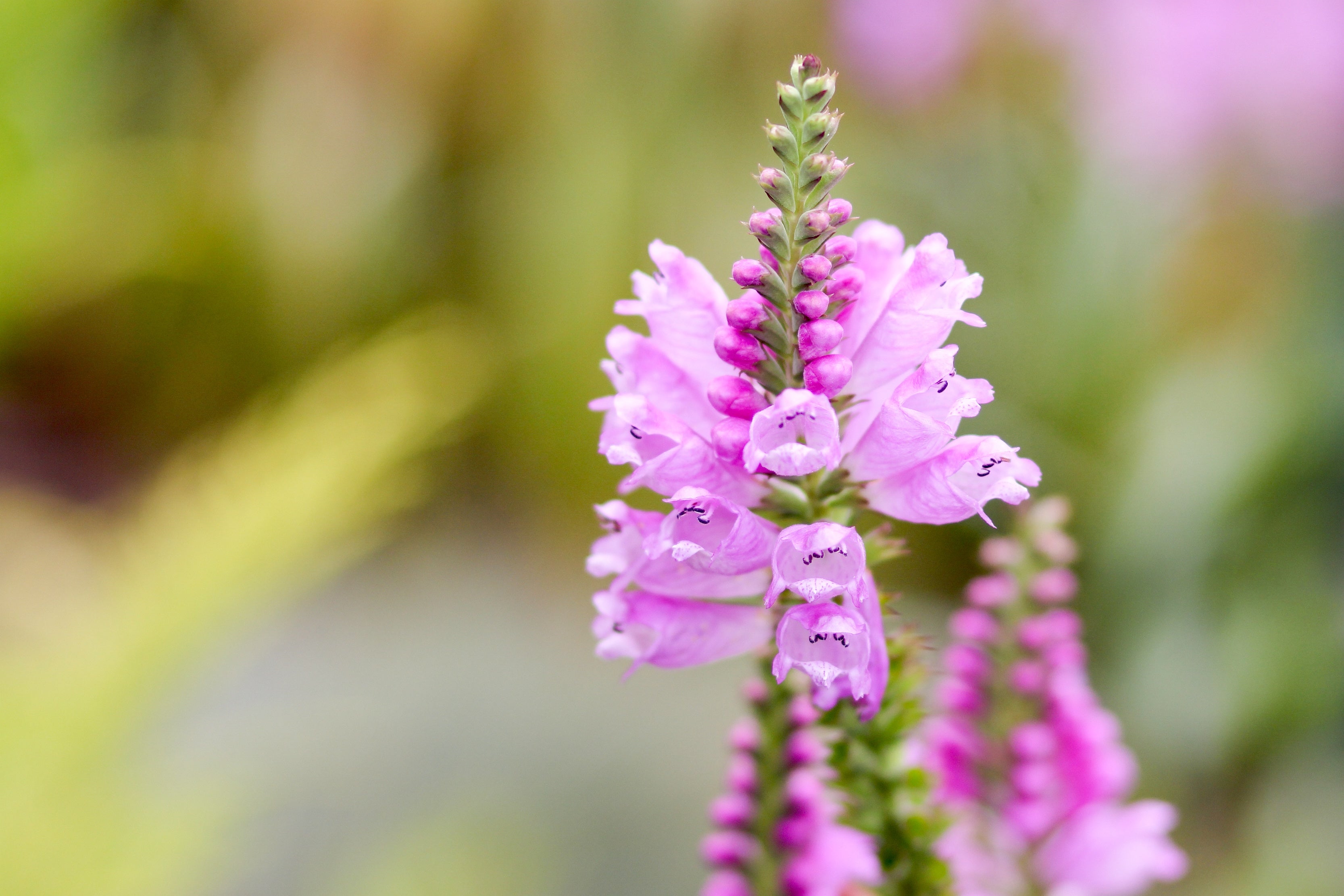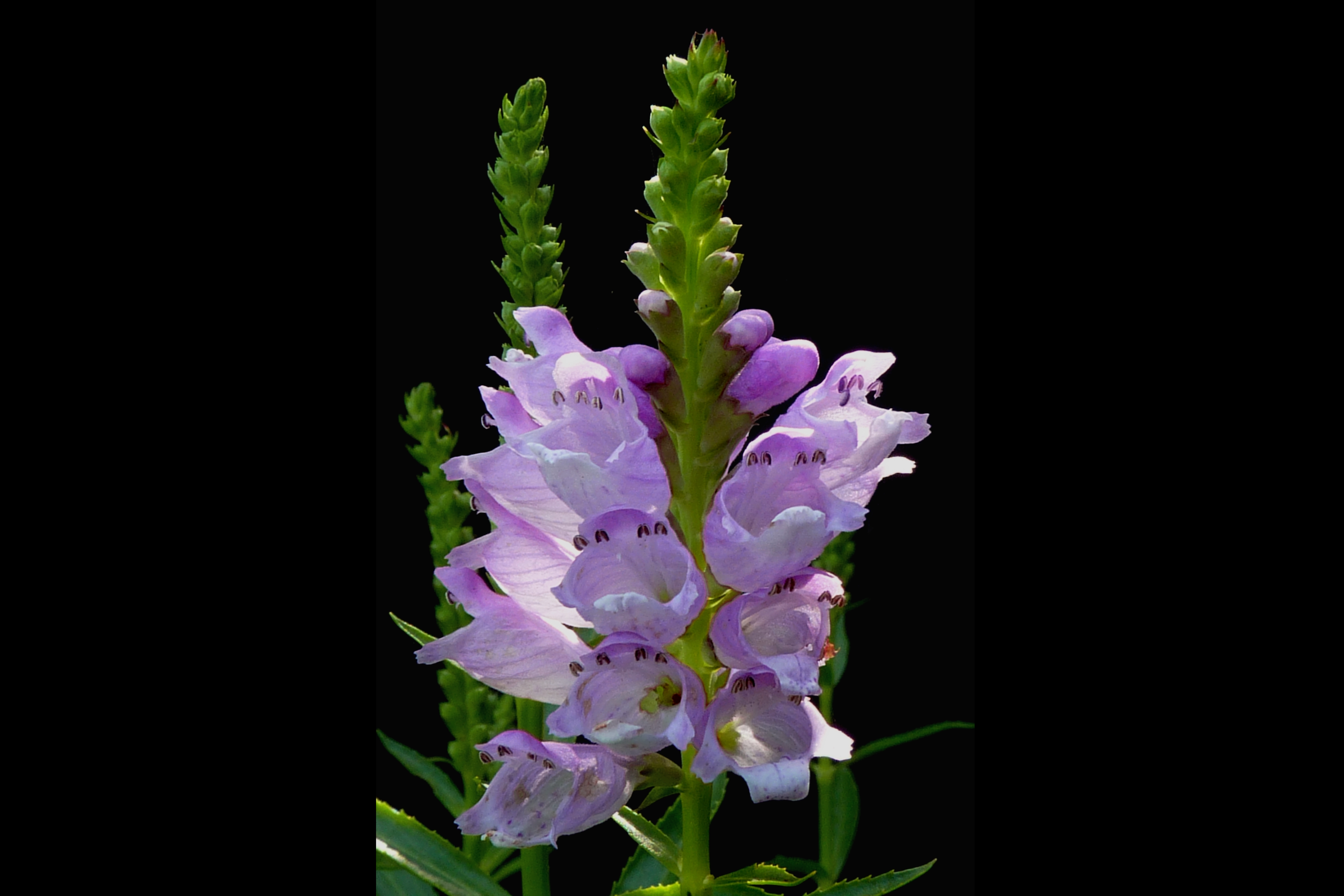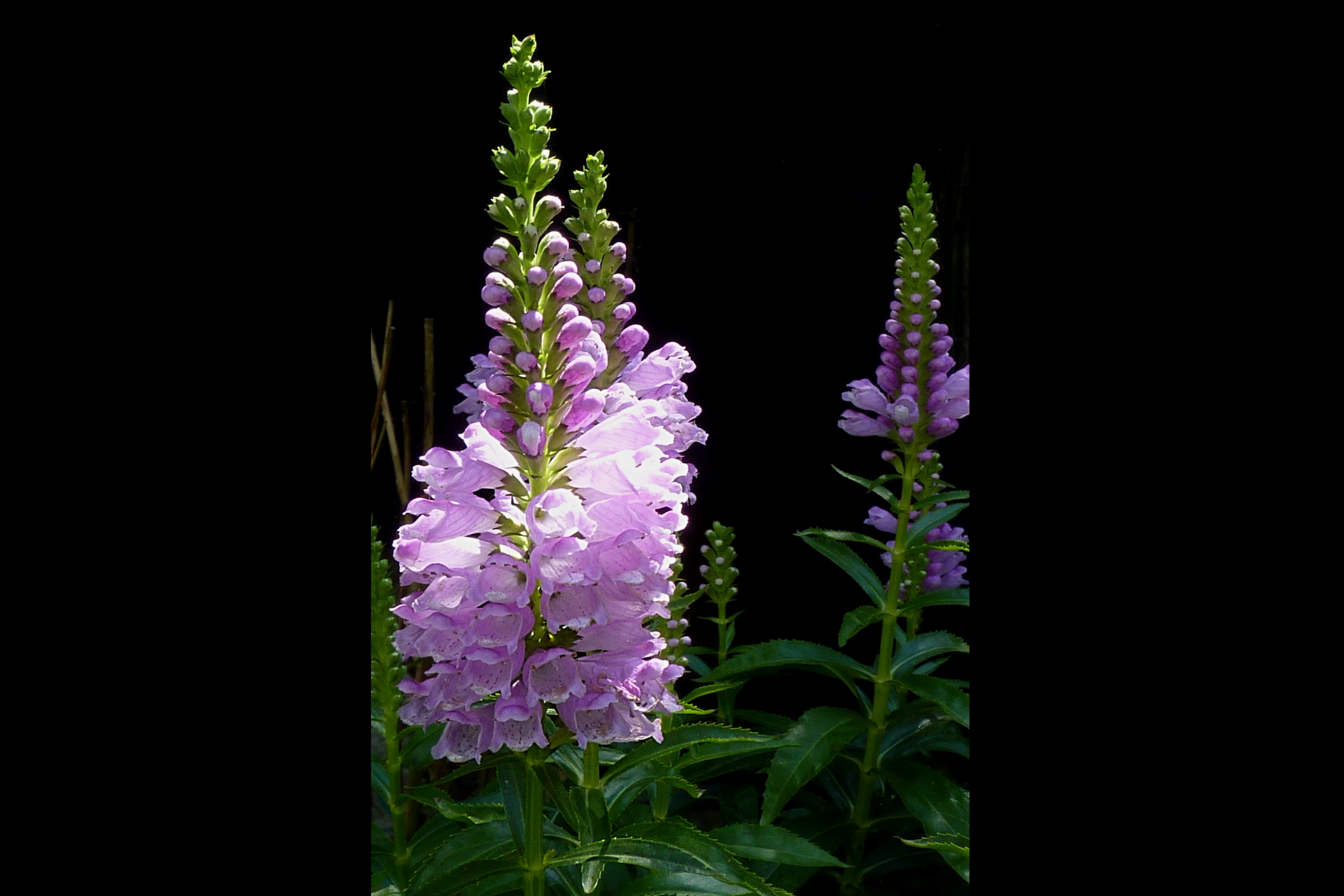Physostegia virginiana 'Rosea'
Approx. 0.5 litre pot
About this cultivar:
Physostegia virginiana 'Rosea' is a lovely pale pink easy to grow obedient plant that is smaller than the usual species.
The species, Physostegia virginiana, affectionately dubbed the obedient plant is loved for its flamboyant blossoms and knack for thriving in various soil and light conditions, this species earned its curious nickname from its unique floral trait. Give it a gentle nudge, and its flowers obediently hold their new position, almost as if they're following the gardener's lead.
A short youtube video from the USA about the species I found below (this cultivar will be a foot smaller than the video!):
- Position: Full sun, partial shade
- Soil: Almost any soil, grows well in Ballyrobert
- Flowers: July, August, September
- Other features: Grows well in Ballyrobert, Cut Flowers or Dried Flowers
- Hardiness: H7 - Hardy in the severest European continental climates (< -20°C), Fully hardy, grows well in Ballyrobert
- Habit: Clump forming
- Foliage: Deciduous
- Height: 30 - 60 cm (1 - 2 ft)
- Spread: 15 - 45 cm (0.5 - 1.5 ft)
- Time to full growth: 2 to 5 years
- Plant type: Herbaceous Perennial
- Colour: Green, pink
- Goes well with: Bees
About this genus:
Physostegia is a captivating genus boasting around 12 species of perennial herbs belonging to the mint family (Lamiaceae). Hailing from North America they renowned for their vibrant floral showcases. The name "Physostegia" draws from Greek roots, with "physa" meaning bladder and "stegē" meaning covering, nodding to the inflated calyx that snugly envelops the developing seeds in some species. Commonly called false dragonhead because the flowers are suggestive of the flowers of dragonhead (Dracocephalum), they are also commonly called the Obedient plant after the most common species, Physostegia virginiana.
Characterized by their upright growth habit, from amongst narrow leaves slender spikes burst forth with tubular blooms, painting the landscape in hues of pink, purple, or white throughout summer and early autumn. It's a party for pollinators, with bees, butterflies, and pollinators all vying for a taste. Great for cut flowers too.
In their native environment they thrive in moist habitats like wet meadows, marshes, and stream banks. But don't be fooled by their preference for wet feet; these plants are chameleons, readily acclimating to diverse environments and gracing gardens worldwide with their charm. Worth a try anywhere not too extreme, they can be easy to grow and almost...dare I say it..rampant...spreading by rhizomes. However the cultivars we sell should be a bit less vigourous and better behaved.
In essence, Physostegia offers gardeners a medley of visually stunning perennials that not only please the eye but also play a crucial role in supporting wildlife. Whether adorning borders, meadows, or even water gardens, these versatile plants elevate the biodiversity and beauty of any outdoor space they inhabit.






